The fortnight at a glance
- Pied-billed Grebe still in Co Cork
- American Coot still in Co Mayo
- Pacific Diver still in Cornwall
- Lesser White-fronted Goose still in Norfolk
- Another Irish American Robin, in Co Kerry
- House Crow still in Co Cork
What was presumably the same Pied-billed Grebe that was at Little Island (Co Cork) — last seen on 12th — was relocated on 28th, reappearing at Rossleague and staying to at least 2nd. Also in Ireland, the American Coot remained at Termoncarragh Loch (Co Mayo) throughout the festive period, showing exceptionally well at times.

Pied-billed Grebe, Rossleague, Cork (Photo: Sean Cronin)
Cornwall's Pacific Diver continued to elude plenty of observers, though, being seen often distantly in the bay off Marazion, Penzance and Newlyn. To confuse matters, and unwary birders, it shared the bay with up to eight Black-throated Divers and three Great Northern Divers.
Norfolk's Lesser White-fronted Goose also stayed on throughout the period around Cantley Marshes and Buckenham Marshes, though the feral bird was also erroneously reported on at least one occasion. This is easy to spot, though: the real McCoy (if it is) stayed with Taiga Bean Geese and the dodgy interloper usually consorted with Greylag Geese. Definitely less genuine was one with Canada Geese at Kingsbury Water Park (Warwickshire) on 29th.
With the County Sligo bird departed, Ireland scored yet again with another American Robin, though this latest bird, at Knockmoyle (Co Kerry), was only seen on Christmas Day, despite being present for at least a week before being identified. County Kerry does well for this vagrant: if accepted, this will be the fourth for the county. Last of the megas was the obligatory House Crow that remained around Cobh (Co Cork) for the fortnight.
The more genuine reports of Snow Goose included one at Greyabbey (Co Down), present with up to 300 Greylag Geese on 28th–4th, and another remained at Craobh Haven (Argyll) to 1st. There was also one 'recently' at Kirkwall (Orkney). Both of the regular Ross's Geese stayed put over the festive period, with one at Ruthwell (Dumfries & Galloway) and Burgh Marsh (Cumbria) on 28th and 4th respectively, and another seen at many sites along the north Norfolk coast with up to 20,000 Pink-footed Geese.
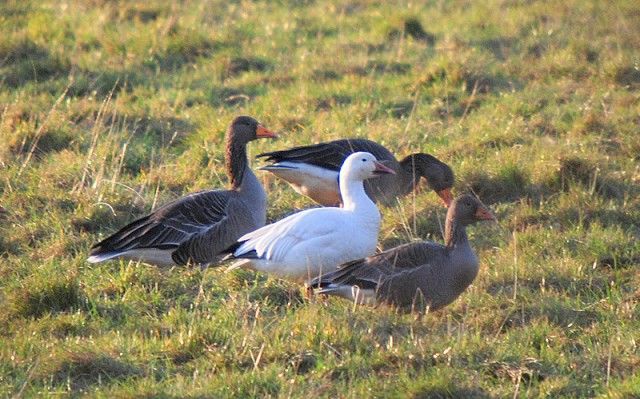
Snow Goose, Greyabbey, Down (Photo: Mark Killops)

Ross's Goose, Burgh Marsh, Cumbria (Photo: Craig Shaw)
Up to 15 Black Brants were reported from various sites, with three in Kent, two or three in Norfolk and two in Essex. Surprisingly, there were only two reports from Ireland, at Dungarvan (Co Waterford) and Rosslare (Co Wexford). One was also at Pett Level (East Sussex), where there was also an adult Red-breasted Goose on 26th–1st. Another Red-breasted Goose remained at Goose Green (Jersey) to 29th with others at Starcross (Devon) on 30th and at Staynall (Lancashire) on 5th. After a short absence, the Richardson's Canada Goose was reported again from Ballyconnell (Co Sligo) on 28th, and one was again at Loch Gruinart, Islay (Argyll) on 30th–3rd.

Black Brant, Shotley Marshes, Suffolk (Photo: Nick Crouch)

Red-breasted Goose, Pett Level, East Sussex (Photo: Mick D)
New Year listers made sure plenty of waterbodies were covered, so there were plenty of reports of wildfowl. The rather handsome returning Ferruginous Duck was back at Craigavon Balancing Lakes (Co Armagh) on 31st–5th, and the only other was also in Ireland, at Tacumshin (Co Wexford) briefly on 3rd. Ireland also played host to five Ring-necked Ducks, with two in Co Cork and others in Down, Donegal and Clare. Elsewhere, one at Cowpen Bewley (Cleveland) on 29th may have also been the bird at Dorman's Pool on 1st–4th, and there were others at Loch Evelix (Highland) on 2nd–5th and Marton Mere (Lancashire), where the drake remained to 28th.
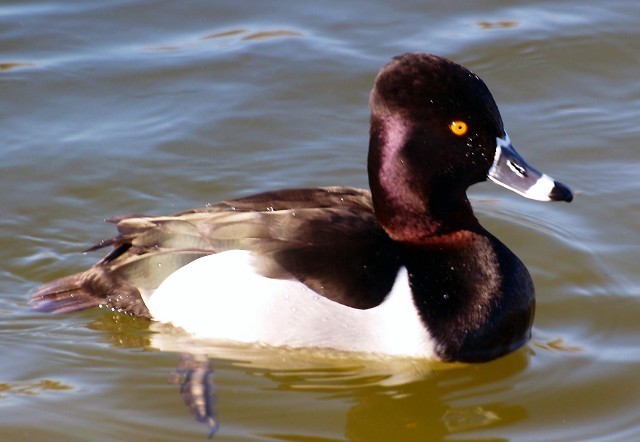
Ring-necked Duck, Dorman's Pool, Cleveland (Photo: Paul Welsh)
A possible female American Wigeon was at Yealmpton (Devon) on 28th and a first-winter male reported from Amble Marshes (Cornwall) was surely the hybrid there previously. More genuine birds were at Pilmore (Co Cork) on 31st–5th and at Rutland Water again on 1st–5th, and a new drake was on Cley Marshes (Norfolk) on 3rd–5th. The Bull Island (Co Dublin) Blue-winged Teal perhaps didn't behave itself for year-listers, being reported only on 28th. Various Lesser Scaup did stay around, though, and the days when this was a mega seem very distant now! A female remained on Orkney, at Wester Sands on 4th, but one reported at Echna Loch on the same day remains unidentified (a hybrid?). The drake then remained in Cardiff Bay (Glamorgan) until at least 1st with Slimbridge's first-winter female present to 5th, confusingly associating with a pinioned bird from the collection! Others were then reported from Lough Gur (Limerick) on 30th, Lough Gill (Co Kerry) on 1st and Hatfield Moors (South Yorkshire) on 5th.

American Wigeon, Cley Marshes NWT, Norfolk (Photo: Perry Fairman)
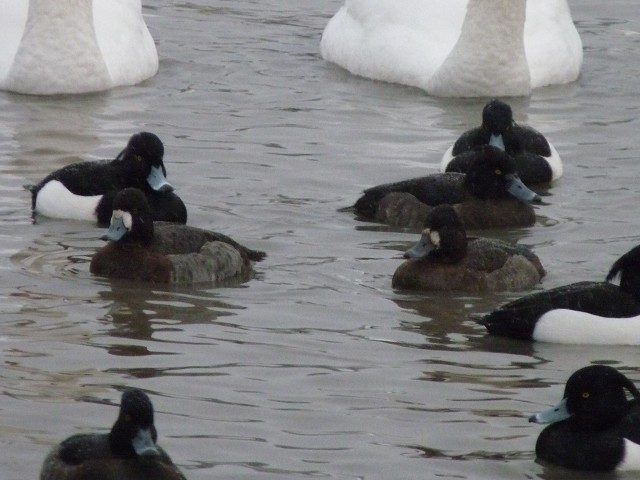
Lesser Scaup, Slimbridge WWT, Gloucestershire (Photo: John Martin)
Green-winged Teal were reported from an impressive 24 sites, with several long-staying birds remaining. There were nine in England, seven in Scotland and seven in Ireland, but only a single bird in Wales, on the Gann estuary (Pembrokeshire) on Christmas Day. The drake Garganey at Blunham (Bedfordshire) also remained throughout again.
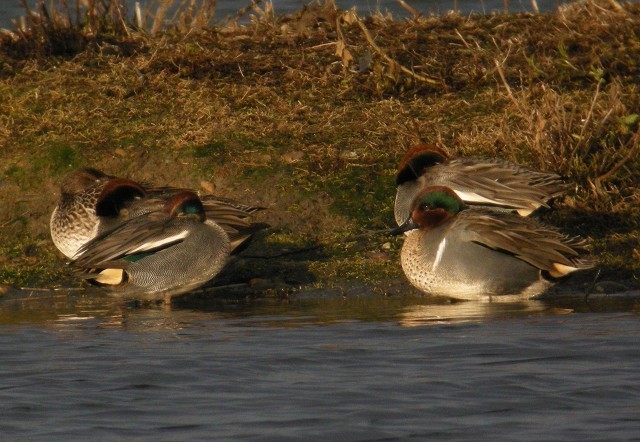
Green-winged Teal, Minsmere RSPB, Suffolk (Photo: Mike Parker)
The female Surf Scoter remained off Dawlish Warren (Devon) to 5th, and in Co Kerry a female and first-winter drake were at Waterville on 24th, joined by a second female when they were seen off Inny Strand on 3rd. In Scotland, a drake flew past Gullane Point (Lothian) on 31st; another was still off Ruddon's Point (Fife) to 3rd and a female was also at Rerwick Head (Orkney) on the same day. One also remained in Co Cork, off Great Island, Glenmore and Aghada.
The drake King Eider was still at Burghead (Moray & Nairn) to 2nd with the first-winter drake at West Voe of Sumburgh (Shetland) to at least 2nd. The Northern Eider was also reported again from Embo (Highland) on 29th and 5th. Almost as unusual were counts of 11 Eider flying past the London Wetland Centre on 31st and seven at Hanningfield Reservoir (Essex) on 1st. There were still very good numbers of Smew around, although the only double-figure counts were 12 at Wraysbury Gravel Pits (Berkshire) and 11 at Pitsford Reservoir (Northamptonshire). On the sea, the first White-billed Diver for a while was off Aghada and Marloag Point (Co Cork) on 24th–1st, and there was also a very impressive count of 1,330 Red-throated Divers past Hastings (East Sussex) on 1st.
Carbis Bay (Cornwall) continued to hold onto at least 10 Balearic Shearwaters at the end of the year, with the only others off St Catherine's Breakwater (Jersey), as per normal, on 24th and one off Strumble Head (Pembrokeshire) on 1st. Again there was just a single Sooty Shearwater, past Broadsands (Devon) on 1st.
Once again, the only Glossy Ibis available for year-listers was the bird at Freeman's Marsh (Berkshire) throughout, with others abandoning us in the cold weather. There were still a fair few Great White Egrets though, perhaps more hardy than their southern cousins. Aside from long-staying birds in Berkshire and Northamptonshire, and birds wandering around at eight sites in Somerset and three in Warwickshire, there were two in Hampshire and singletons at Worth Marsh (Kent), Corfe Mullen (Dorset) and Caythorpe (Nottinghamshire). Single Cattle Egrets continued to roam around Jersey and Guernsey, with two new birds at Fordingbridge (Hampshire) on 31st–1st. Various groups of Spoonbills also remained throughout, with peak counts of seven at Holes Bay (Dorset) on 26th, seven at Isley Marsh (Devon) on 28th, five at Torpoint (Cornwall) on 3rd and five at Middlebere (Dorset) on 4th.
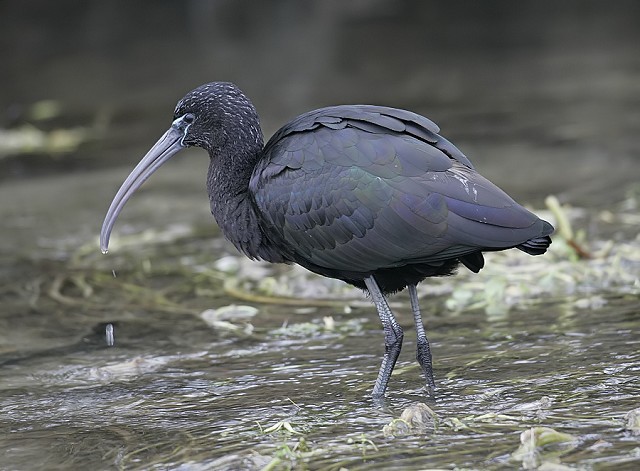
Glossy Ibis, Freeman's Marsh, Berkshire (Photo: Dave Hutton)

Great White Egret, Great Shefford, Berkshire (Photo: Stephen Burch)
Plenty of reports of Rough-legged Buzzards continued to come in, many from the now typical wintering sites. New reports came from 14 sites, though, including five in Kent and four in Shetland, though these may refer to individual roaming birds. Elsewhere, there were singles at Donna Nook (Lincolnshire), Pett Level (East Sussex), Leatherhead (Surrey) and Nailsworth (Gloucestershire). Both of the wintering Northern Harriers also remained throughout, at Tacumshin (Co Wexford) and around Thornham (Norfolk). Also on the raptor front, there was a possible Black Kite over Romsey (Hampshire) on 23rd and the county also saw the reappearance of the White-tailed Eagle, seen circling over Hordle for 20 minutes on 1st. There was also another possible 'Tundra' Peregrine Falcon, this time at Amble Marshes (Cornwall) on 5th, though perhaps present since New Year.
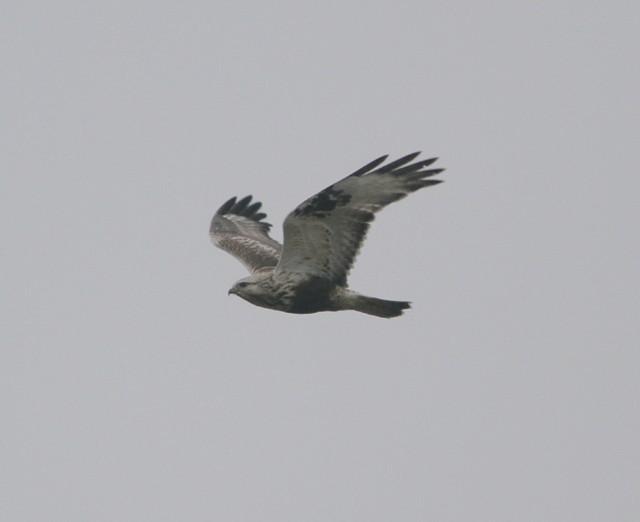
Rough-legged Buzzard, Lydd, Kent (Photo: Martin Casemore)
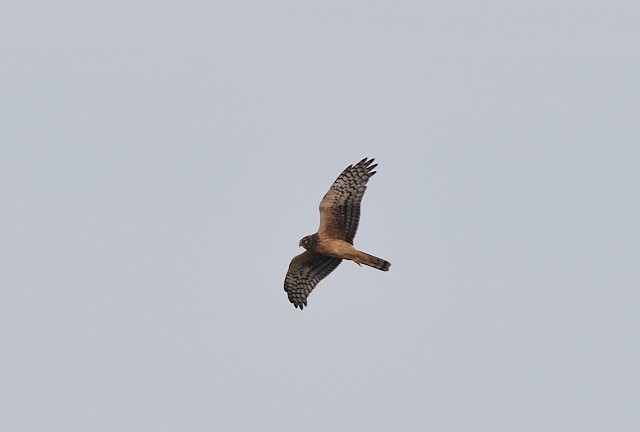
Northern Harrier, Thornham, Norfolk (Photo: Baz Scampion)
A confiding Grey Phalarope was new in Cornwall, seen off Newlyn, Tolcarne beach and Penzance, whilst another was at Aird Asaig, Harris (Outer Hebrides) on 2nd. Cornwall also saw another report of a possible American Golden Plover, at St Ives on 22nd and again at the turn of the year (date unknown!). The only other wader of note was the Long-billed Dowitcher that arrived back at Lodmoor (Dorset) on 28th then stayed put through the New Year.

Grey Phalarope, Tolcarne Beach, Cornwall (Photo: Brian Mellow)
White-winged gulls were widely reported over the festive period, though perhaps not as many as might be expected. All Glaucous Gulls were singletons and at far fewer sites than Iceland Gulls. There were also 'twos' of the latter at North Gare (Cleveland) on 24th, Swillington Ings (West Yorkshire) on three dates and Killybegs (Co Donegal) on 30th.

Glaucous Gull, Dungeness, Kent (Photo: Martin Casemore)
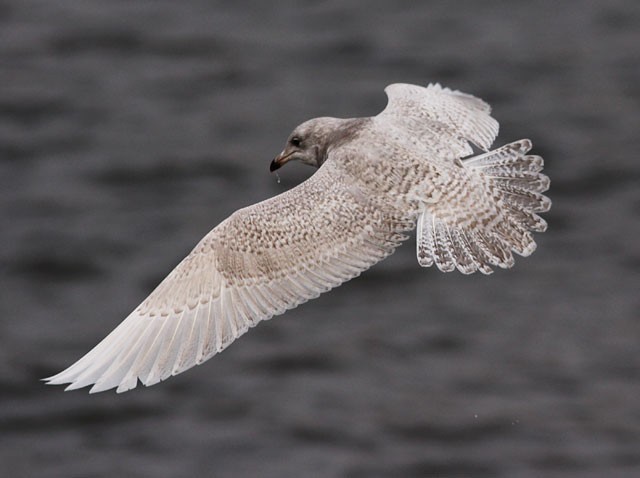
Iceland Gull, Scarborough, North Yorkshire (Photo: Terry Hobson)
With year-listers out in force, many of the wintering Ring-billed Gulls were reported, present in Hampshire, Essex, West Yorkshire, Co Cork and Co Galway. New birds were also widely reported, from Kidwelly (Carmarthen), Par (Cornwall), Clonakilty (Co Cork), Rumney Great Wharf (Glamorgan), Chew Valley Lake (Somerset), Bray (Co Wicklow), Tramore (Co Waterford), Warsash (Hampshire) and Lough Aderra (Co Cork). There was also a second-winter at St Neots (Cambridgeshire) on 2nd, which is only the fourth record for the county. Back in Ireland, the resident Forster's Tern stayed put around Nimmo's Pier (Co Galway), reported over 29th–1st. A couple of gull highlights didn't quite come to fruition, though, with a possible adult Sabine's Gull in a car park (!) at Pakefield (Suffolk) on 28th not reported again and a possible adult Ivory Gull past Little Haven (Pembrokeshire) on 3rd never being confirmed or pinned down.

Ring-billed Gull, St. Neots, Cambridgeshire (Photo: Stuart Elsom)
Shore Larks seem to have bounced back after low numbers in mid-December, with up to 21 still at Gibraltar Point (Lincolnshire), 19 in the baited area at Dingle Marshes (Suffolk) and 11 at each of Seasalter (Kent) and The Naze (Essex) on 4th. The festive period was always going to be a busy one for Waxwings, with birds continuing to spread around the country and plenty of birders out to find them. The 1,914 reports we put out over the two weeks ensured many will have connected with at least one or more flock of these fine birds. Some of the highest counts were in Buckinghamshire, including 200 at Bletchley, 168 at Amersham and 150 at High Wycombe, and in Kent 200 were in both Gillingham and Pegwell Bay.

Shore Lark, Titchwell RSPB, Norfolk (Photo: Andy Thompson)

Waxwing, Balham, Greater London (Photo: Jack Hill)
As for a few other species, many birders will have been digging out Great Grey Shrikes during the holidays, and birds were reported from an impressive 37 different sites, including five in Surrey. Interestingly, though, there were also three new arrivals in Highland, at Drumguish on 29th–31st, Inverlael on 31st and Kingussie on 2nd–3rd. Also new in was an unusual winter record of Rose-coloured Starling, one on St Mary's (Scilly) on 23rd–2nd.

Rose-coloured Starling, St. Mary's, Isles of Scilly (Photo: Joe Pender)
Up to three Coues' Arctic Redpolls remained at Rainton Meadows (Durham) throughout and there were three birds finally confirmed at Hatfield Moors (South Yorkshire) on 31st–5th. Apart from a probable at Strumpshaw Fen (Norfolk) on 1st, the only new bird was at Widdrington Tip (Northumberland) on 3rd–4th. Lapland Buntings were also in smaller numbers again, apart from the excellent mid-winter count of 83 at the traditional site of Frampton Marsh (Lincolnshire) on 26th. Away from here, double-figure counts included 40 at Rhossili Bay (Glamorgan) on 1st, 18 at Paviland (Glamorgan) on 2nd, 14 at Sturt Pond (Hampshire) on 30th and 12 at Gunwalloe (Cornwall) on several dates. After its reappearance in mid-December, the Little Bunting was again at Great Glemham (Suffolk), reported on 23rd.

Coues' Arctic Redpoll, Widdrington Station, Northumberland (Photo: Alan Tilmouth)
Almost ending the year as it began, there was just one last belated report of a Nearctic passerine in a garden. This latest offering was a Dark-eyed Junco apparently seen on 18th–19th in Waltham Abbey (Essex), but further details are rather lacking. Last but not least, Northern Bullfinches were reported from Wells Wood (Norfolk) on 24th and two were in Lerwick (Shetland) on 27th and 2nd.
Photo of the Week: 23rd–29th December 2010

Woodcock, Killard NR, Down (Photo: Craig Nash)
Our final Photo of the Week for 2010 was taken on Christmas Day by Craig Nash at his local nature reserve in Northern Ireland. Woodcocks are usually extremely difficult to photograph in flight, due to their habit of skulking in woodland by day and flying only once light levels have fallen. To see a Woodcock flying out in the open in mid-morning sunlight is a rare opportunity and one that Craig certainly didn't waste. Our pick of his series freezes the bird with wings raised, allowing the warm-toned sunlight to bathe its whole underside, as well as perfectly illuminating the face. This shot is also a great illustration of how to compose a flight shot. Many photographers will know that giving the bird space to 'fly into' works better than centring it horizontally within the frame. Another useful tip, however, is to position flying birds towards the top of the frame, rather than on the vertical centre-line: this makes for a more natural-looking image. Finally, although it's difficult to achieve in practice, it can be good to include background elements other than the sky in flight shots, to give a sense of place (try covering up the bottom of this picture to see the difference this can make). We can't wait to see what top-quality bird photos get uploaded in 2011!
Other notable photos

Bullfinch, Germany (Photo: Siegbert Werner)

Bittern, Tenbury Wells, Worcestershire (Photo: Mr Clive Daelman)

Common Kingfisher, undisclosed site, Hampshire (Photo: Aaron Gee)

Common Buzzard, Forest of Dean, Gloucestershire (Photo: Mick Colquhoun)

Great Black-backed Gull, France (Photo: jp LAFOND)

Lesser Redpoll, Cheadle, Staffordshire (Photo: Nezzer)

Little Grebe, Horbury, West Yorkshire (Photo: James Thomas)
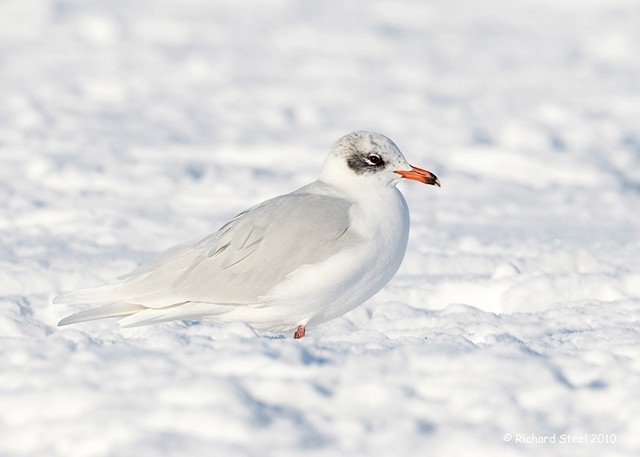
Mediterranean Gull, New Brighton, Cheshire (Photo: Richard Steel)

Water Rail, Wrafton, Devon (Photo: Rob Cross)

Short-eared Owl, Aust Warth, Gloucestershire (Photo: Brian Lancastle)

Brambling, East Linton, Lothian (Photo: James Wood)

Grey Wagtail, Wigan, Greater Manchester (Photo: David Cookson)

Robin, Spital, Cheshire (Photo: Steve Round)
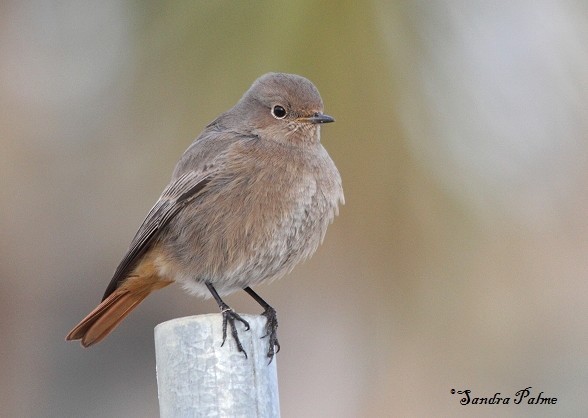
Black Redstart, Worthing, West Sussex (Photo: Sandra Palme)

Black Kite, India (Photo: Dave Williams)

Sanderling, Italy (Photo: Paolo Caretta)
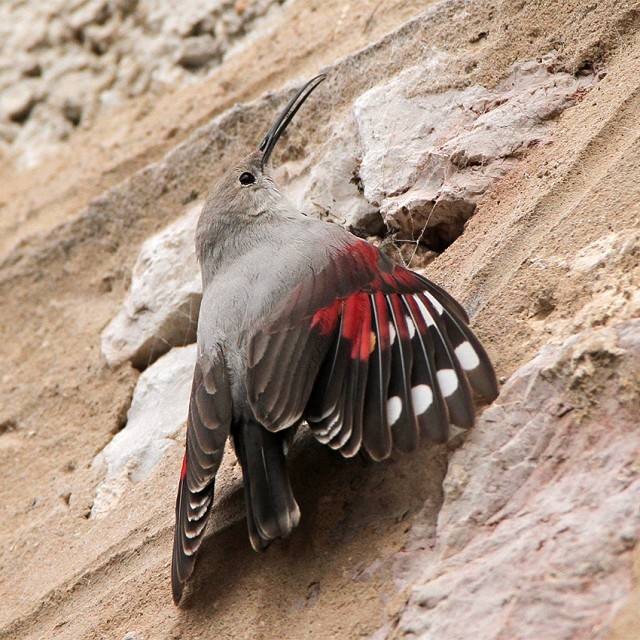
Wallcreeper, Spain (Photo: Jamie MacArthur)

Wood Pigeon, Thorngumbald, East Yorkshire (Photo: Harry Bursell)

Grey Phalarope, Bardsey Island, Gwynedd (Photo: Steve Stansfield)
Photo of the Week: 30th December 2010–5th January 2011

Blackcap, East Linton, Lothian (Photo: James Wood)
If you're taking the opportunity of the New Year to resolve to improve your bird photography in 2011, there's no better way than to get back to basics. Take a break from chasing record shots of rarities or blasting away at high-speed action and consolidate the fundamentals of good image creation. If you're looking for inspiration, take a look at James Wood's delightful portrait of a male Blackcap peering around a tree. The image is sharp where it needs to be — on the bird's eye and head — but sufficiently unsharp in the other parts of the image for the bird to stand out. Exposure, contrast and colours are spot-on, making the image 'pop'. The foreground and background convey a sense of place and time (woodland in winter) and the bird itself is in an interesting, endearing pose. More often than not, though, what makes an image is the composition, i.e. which elements are included and how these are arranged. In this case, the bird occupies a pleasing amount of the frame: if James had included more or less of the setting, the bird would have looked 'lost' or 'cramped', respectively. Crucially, there are no unnecessary or distracting elements in the scene: what's excluded is just as important as what's included. The most under-rated aspect of composition is simplicity. Finally, James has used a number of techniques to ensure the image is balanced: a vertical crop to go with the 'tall' subject, careful placement of the bird in the frame, and cropping such that neither the foreground nor the background dominates. Honing your basic skills will allow you to create great images of any bird species and will equip you to make the most of those once-in-a-lifetime encounters with more unusual subjects.
Other notable photos

Black-headed Gull, Wroxham Broad, Norfolk (Photo: Kevin Du Rose)
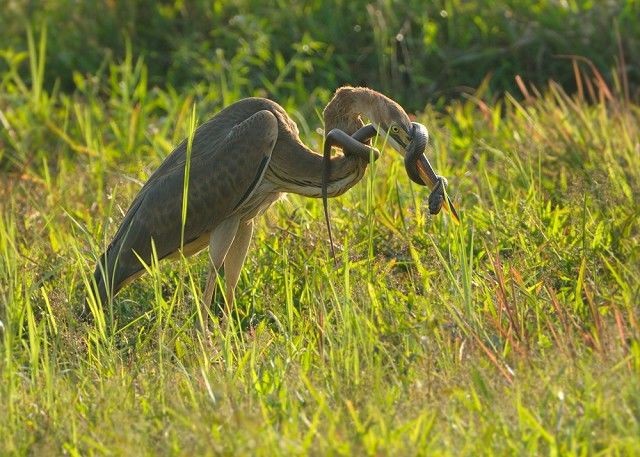
Purple Heron, India (Photo: Dileep Kumar)

Waxwing, Maldon, Essex (Photo: Dave Martin)

Bittern, Dungeness RSPB, Kent (Photo: Brian Harper)
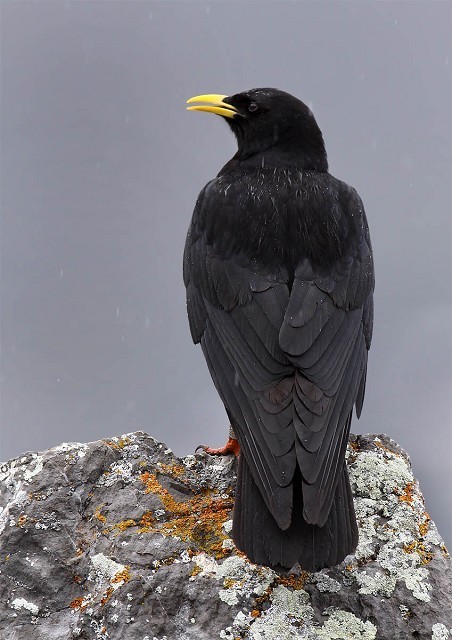
Alpine Chough, Spain (Photo: Jamie MacArthur)

Short-eared Owl, undisclosed site, Staffordshire (Photo: Peter Walkden)

Common Snipe, Israel (Photo: Danny Laredo)

Great Northern Diver, Scarborough, North Yorkshire (Photo: Steve Race)

Little Green Bee-eater, India (Photo: Dave Williams)

Sri Lanka Frogmouth, India (Photo: Gavin Farnell)

Dipper, Cheddar, Somerset & Bristol (Photo: James Packer)

Siskin, Llandrindod Wells, Powys (Photo: Kev Joynes)
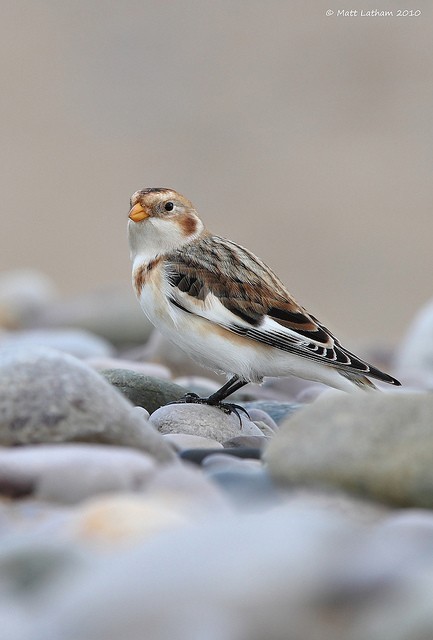
Snow Bunting, Kinmel Bay, Conwy (Photo: Matt Latham)

Greylag Goose, Abberton Reservoir, Essex (Photo: Carl Wright)

Yellowhammer, Poland (Photo: Artur)

Common Redshank, Comber Estuary, Down (Photo: Danny Boyd)

Brambling, Venus Pool NR, Shropshire (Photo: John Fielding)

Water Rail, Upton Warren NR, Worcestershire (Photo: Chris Cook)

